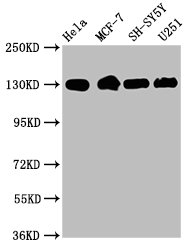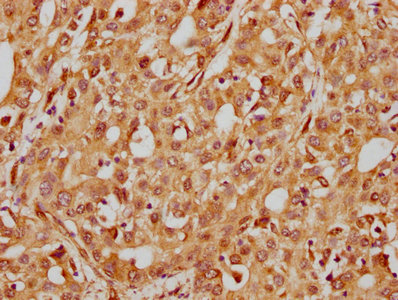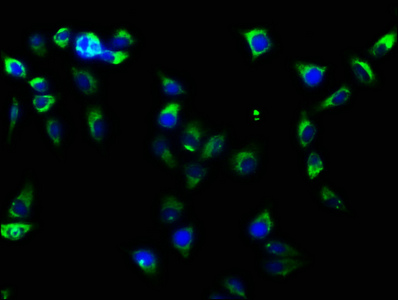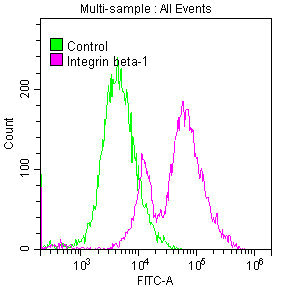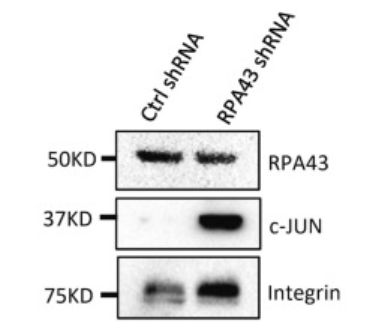The production of the ITGB1 recombinant monoclonal antibody involves the utilization of DNA recombinant technology and in vitro genetic manipulation. The process begins by immunizing an animal with a synthesized peptide derived from human ITGB1, followed by the isolation and selection of positive B cells. Screening and single clone identification are performed to ensure the desired antibody specificity. The light and heavy chains of the ITGB1 antibody are then amplified using PCR and integrated into a plasmid vector to create a recombinant vector. This vector is subsequently introduced into a host cell line to facilitate antibody expression. The ITGB1 recombinant monoclonal antibody is purified from the cell culture supernatant using affinity chromatography. With its capability to selectively bind to human ITGB1 protein, this antibody is highly recommended for five applications, including ELISA, WB, IHC, IF, and FC.
The ITGB1 protein is a transmembrane protein that is involved in cell adhesion, migration, proliferation, differentiation, and signaling. It forms a heterodimeric complex with different alpha integrin subunits to form functional receptors for extracellular matrix (ECM) molecules such as fibronectin, laminin, and collagen. The ITGB1 receptor is involved in a wide range of physiological and pathological processes, including embryonic development, wound healing, immune response, and cancer metastasis. Dysregulation of ITGB1 signaling has been implicated in various diseases, including cardiovascular disease, inflammation, and cancer.

